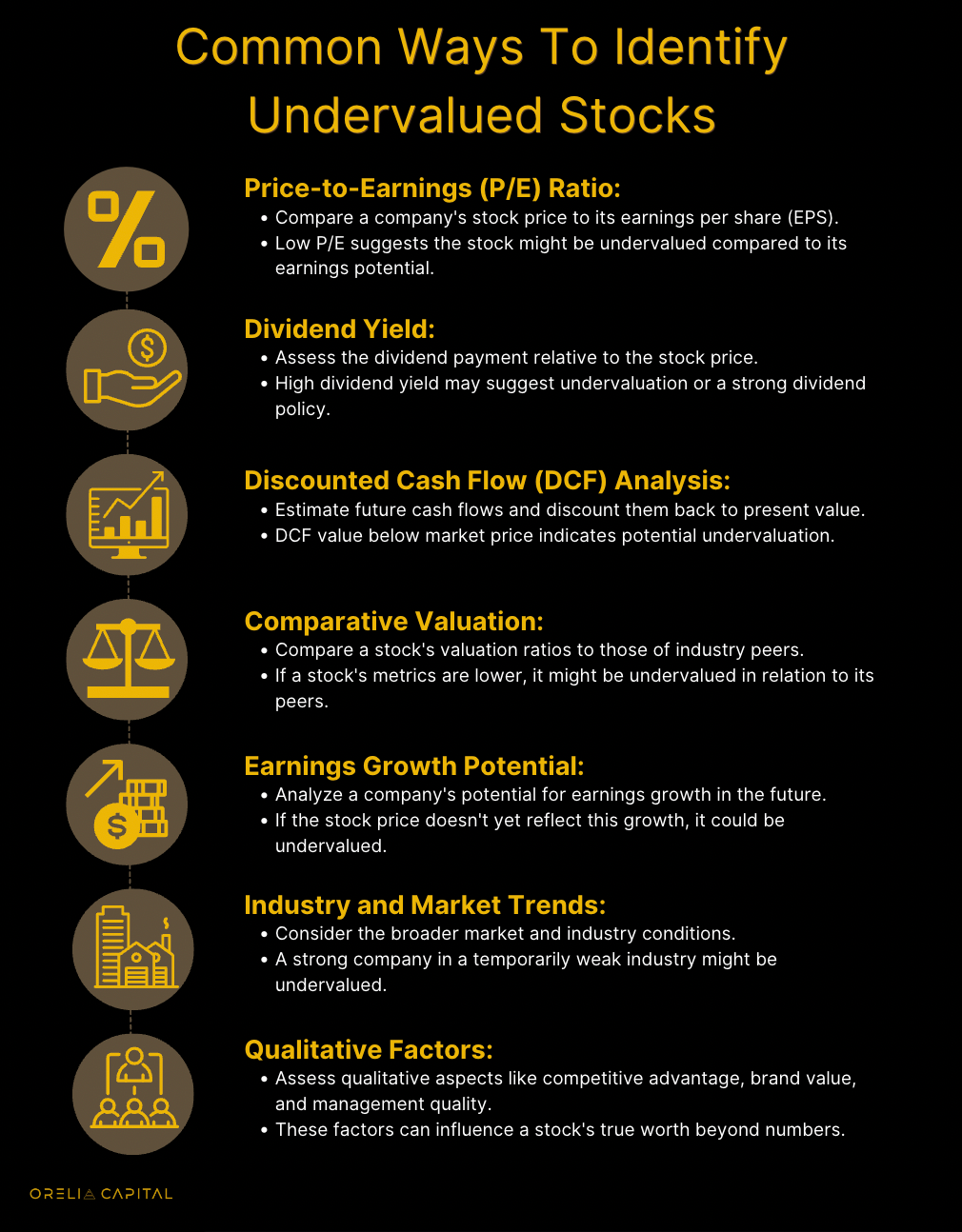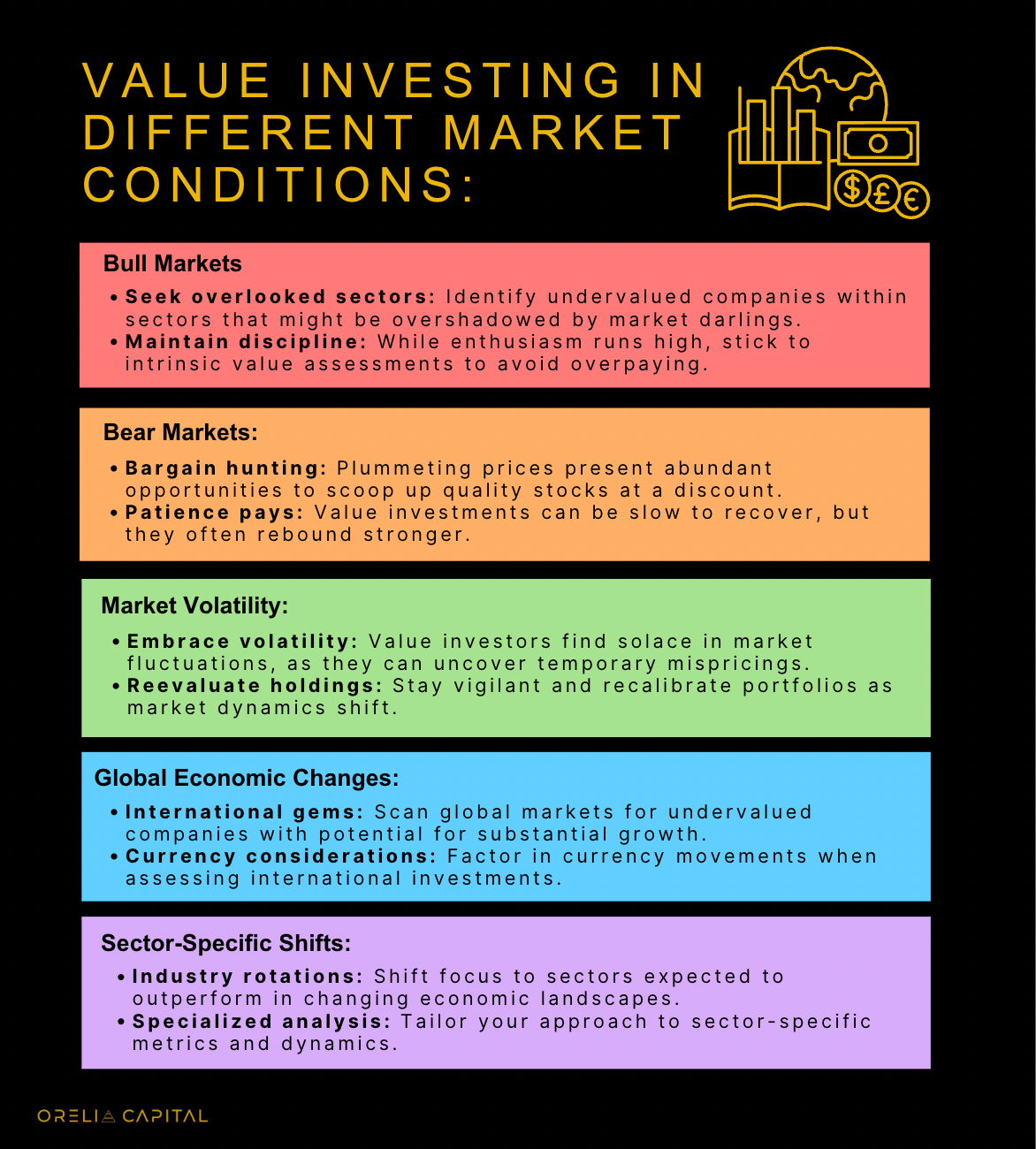Understanding The Philosophy of Value Investing

In the fast-paced world of investing, value investing is a steadfast strategy that has stood the test of time. Value investors seek to unearth hidden gems within the stock market by delving beyond the surface and uncovering hidden opportunities. Join us as we journey to understand the core principles and techniques that define this strategy.
Introduction to Value Investing:
Value investing traces its origins back to the teachings of Benjamin Graham, often regarded as the "father of value investing" and further popularized by Warren Buffett. It's not about chasing the next big thing but about recognizing the true worth of an investment.
- Going Against the Grain: In a market dominated by trends, value investing dares to be contrarian. Instead of blindly following the herd, value investors swim against the tide, seeking diamonds in the rough that others might consider mere pebbles.
- Emphasis on Intrinsic Value: The crux of value investing lies in assessing a company's intrinsic value, which is essentially what a company is truly worth based on its fundamentals. This involves scrutinizing financial statements, evaluating earnings potential, and studying assets and liabilities.
- Long-Term Focus: Unlike short-term traders fixated on rapid gains, value investors adopt a patient approach. They understand that the real value of a stock may not materialize immediately and are willing to wait for the market to recognize the true potential of their investments.
- Tapping into Market Inefficiencies: One of the critical premises of value investing is that markets are not always efficient. Emotional reactions, market noise, and speculative behaviours can lead to stock prices deviating from their intrinsic value. Value investors capitalize on these inefficiencies.
- The Essence of Margin of Safety: A pivotal concept in value investing is the "margin of safety." This is the gap between the intrinsic value of a stock and its market price. By purchasing stocks with a significant margin of safety, investors create a cushion against unexpected downturns.
Fundamental Analysis Techniques:
Fundamental analysis is the bedrock of value investing, allowing investors to delve beyond stock price movements and into a company's true financial health and potential. Let's explore the fundamental techniques that empower value investors to make informed decisions:
Financial Statements Examination:
- Balance Sheets: Assess a company's assets, liabilities, and equity to gauge its financial position and solvency.
- Income Statements: Analyze revenues, expenses, and profits to understand a company's operational performance over time.
- Cash Flow Statements: Evaluate the flow of cash in and out of the company to ensure its ability to meet financial obligations.
Ratio Analysis:
- Price-to-Earnings (P/E) Ratio: Compare the stock price to earnings per share; a lower ratio suggests undervaluation.
- Price-to-Book (P/B) Ratio: Measure the stock price against its book value, revealing if a stock is trading below its net asset value.
- Dividend Yield: Calculate the dividend income relative to the stock price, providing insights into the company's dividend policy.
Earnings Growth and Stability:
- Study the consistency and trajectory of a company's earnings growth over time.
- Analyze how external factors and industry dynamics impact a company's financial stability.
Quality of Management:
- Scrutinize the track record of the company's management team in making effective decisions and driving growth.
- Assess the alignment of management's interests with shareholders.
Valuation Models:
- Discounted Cash Flow (DCF): Estimate a company's intrinsic value by projecting future cash flows and discounting them back to present value.
- Dividend Discount Model (DDM): Determine a stock's value based on the present value of its future expected dividends.

Contrarian Investing: Embracing Opportunity Amidst Market Pessimism
In a world where market sentiment often drives decisions, contrarian investing emerges as a strategy that dances to a different tune. This approach involves going against the crowd, capitalizing on mispriced assets during times of market pessimism. Let's explore the intricacies of contrarian investing through concise bullet points:
Against the Grain:
- Contrarian investors are unafraid to stand apart from the prevailing market sentiment.
- They recognize that market emotions can create pricing disparities, presenting opportunities.
Fear and Greed:
- Market sentiment often swings between fear and greed, driving stocks to extreme highs and lows.
- Contrarians buy when fear prevails, believing that assets can be unduly discounted.
Value in Chaos:
- Turbulent markets can result from global events, economic downturns, or industry-specific issues.
- Contrarians spot value amid chaos, as stocks may be unjustifiably beaten down.
Discipline and Conviction:
- Contrarian investing requires discipline and conviction to withstand criticism from the mainstream.
- Staying the course can lead to significant gains when the market eventually corrects itself.
Risk Management:
- While contrarian investing can yield high returns, it carries risks of misjudgment and timing.
- Diversification and risk assessment are crucial to mitigate potential losses.
Contrarian investing is the art of seeing opportunity when others perceive adversity. It's a strategy that requires a blend of analytical prowess, conviction, and a contrarian spirit to seize undervalued opportunities.

Risks and Pitfalls of Value Investing:
Value Traps:
- Some stocks are cheap for a reason, such as poor management, declining industries, or unsustainable business models.
- Solution: Rigorous due diligence is essential to differentiate between genuine value and potential value traps.
Timing and Patience:
- Stocks can remain undervalued for more extended periods before realizing their potential.
- Solution: Maintain patience and avoid rushing into decisions; focus on the long-term perspective.
Market Cycles:
- Economic cycles can impact even well-selected value stocks during market downturns.
- Solution: Diversify across sectors and industries to mitigate the impact of cyclical fluctuations.
Limited Catalysts:
- Undervalued stocks may lack immediate triggers for price appreciation.
- Solution: Seek stocks with identifiable catalysts, like upcoming product launches or industry trends.
Behavioural Biases:
- Investors can be swayed by emotions, leading to suboptimal decisions.
- Solution: Stay disciplined, stick to your investment thesis, and avoid succumbing to short-term market sentiment.
In the dynamic world of finance, value investing remains a beacon of sensibility. You can navigate the market discerningly by mastering these intricacies and uncovering hidden gems amidst the noise.

We hope you enjoyed this edition of our newsletter. If you found it helpful, please consider sharing it with others who might benefit from this information.
At Orelia Capital, we believe that feedback is a gift. Your feedback can help us improve our content and provide more value to our readers.





